
How to Use Adafruit MSA301: Examples, Pinouts, and Specs
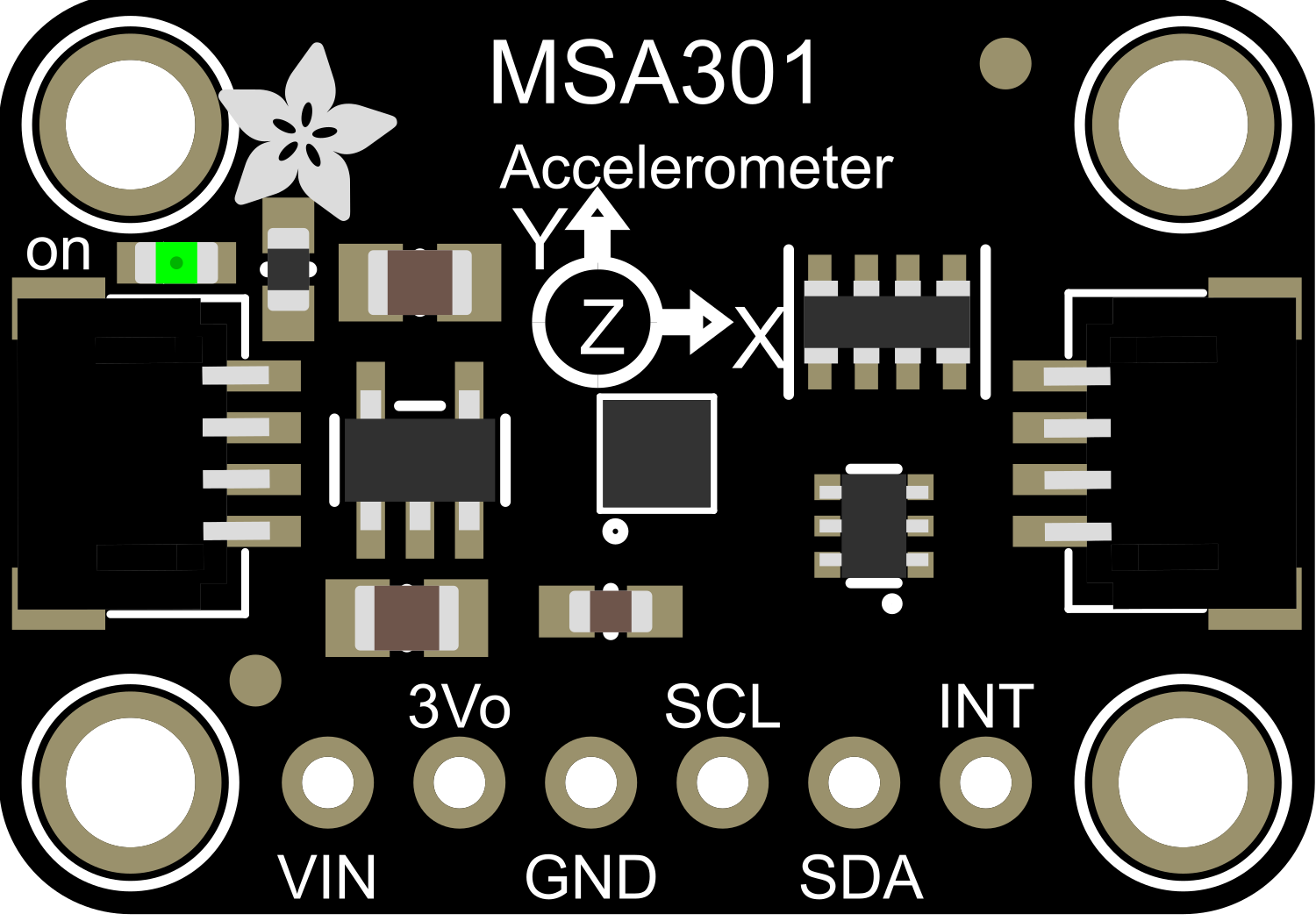
 Design with Adafruit MSA301 in Cirkit Designer
Design with Adafruit MSA301 in Cirkit DesignerIntroduction
The Adafruit MSA301 is a compact and versatile 3-axis accelerometer module capable of detecting acceleration in three-dimensional space. This sensor is ideal for a wide range of applications, including motion detection, tilt sensing, robotics, gaming devices, and fitness trackers. Its I2C communication protocol allows for easy integration with microcontrollers and development boards such as the Arduino UNO.
Explore Projects Built with Adafruit MSA301
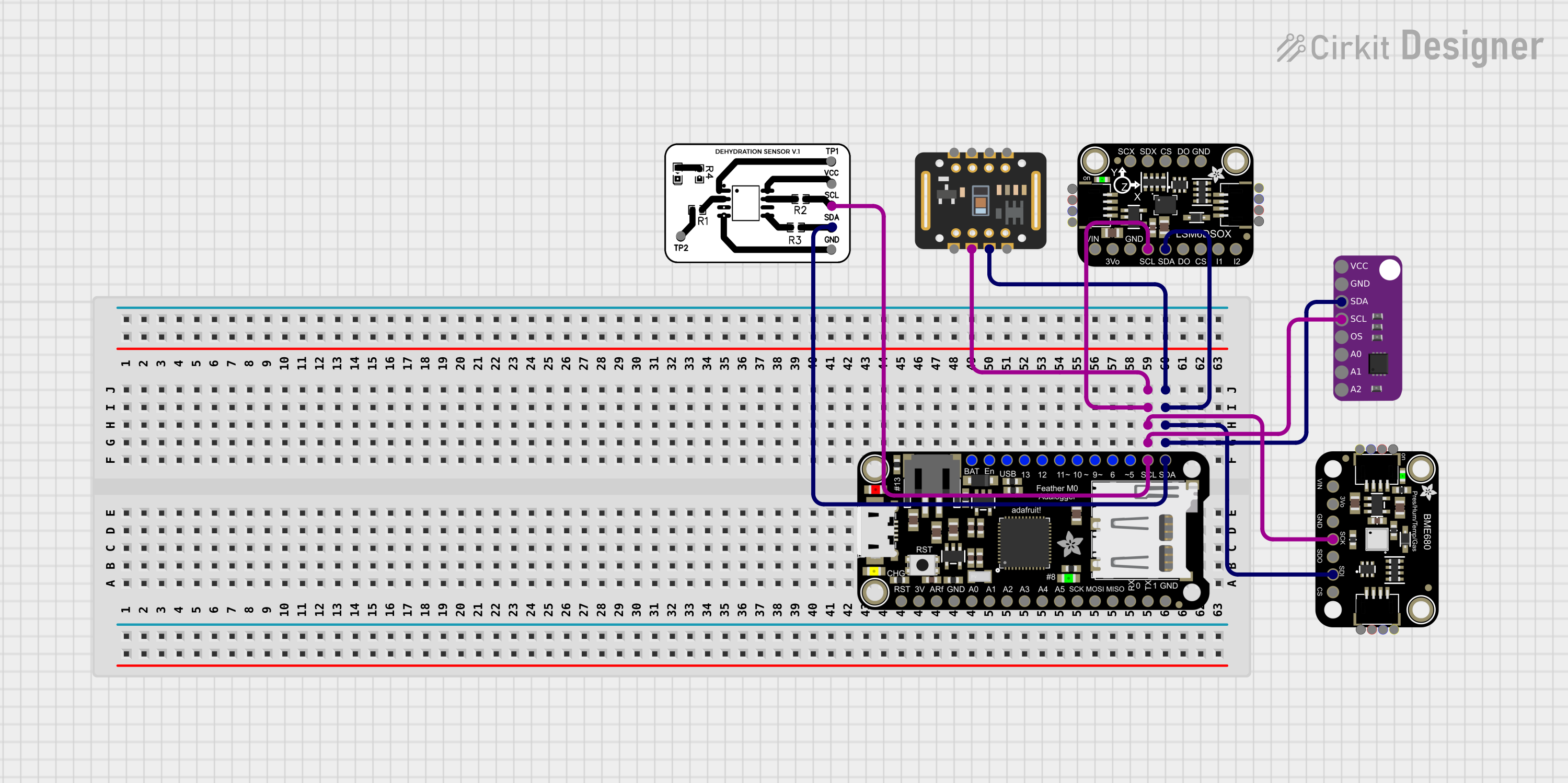
 Open Project in Cirkit Designer
Open Project in Cirkit Designer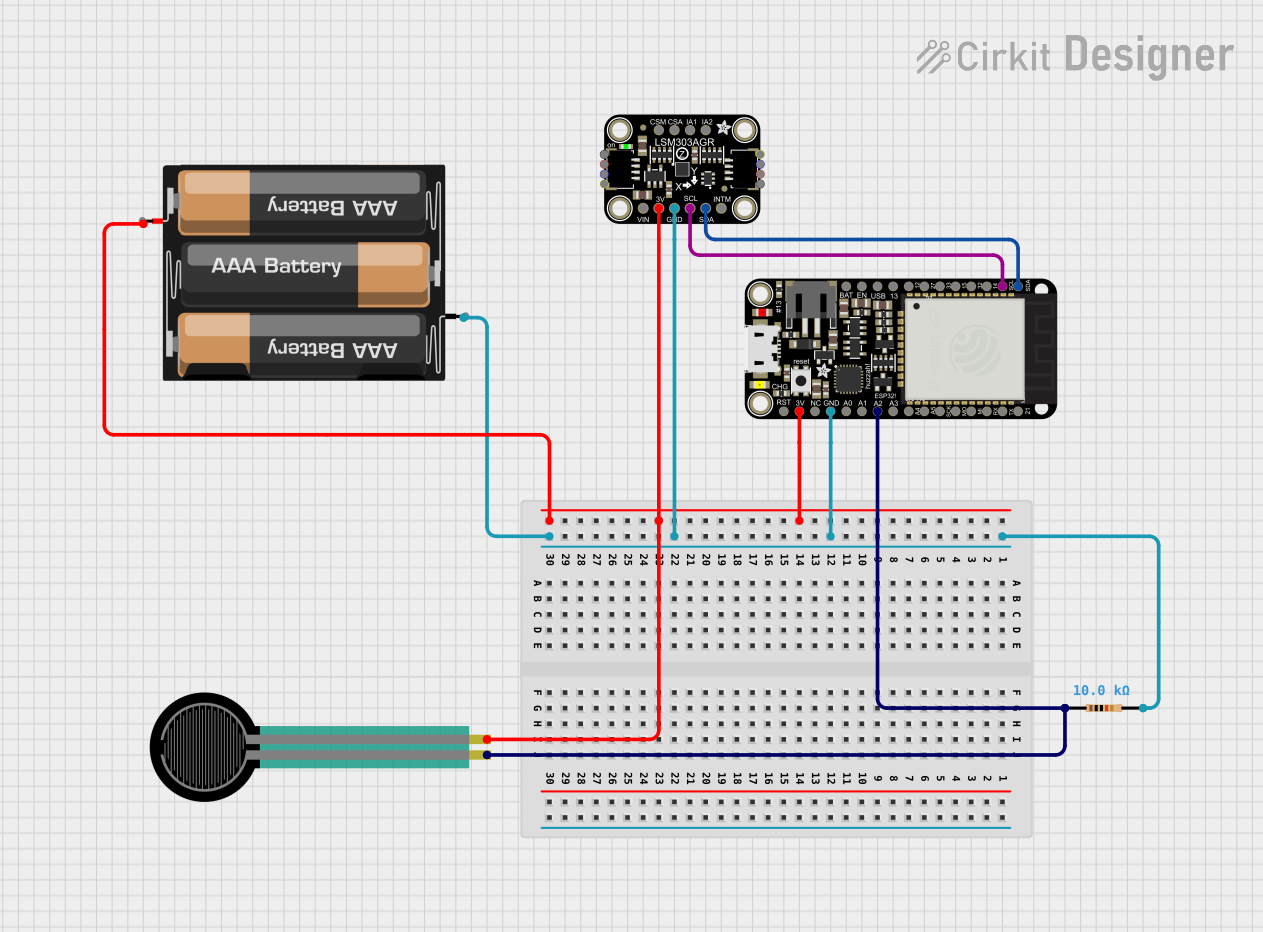
 Open Project in Cirkit Designer
Open Project in Cirkit Designer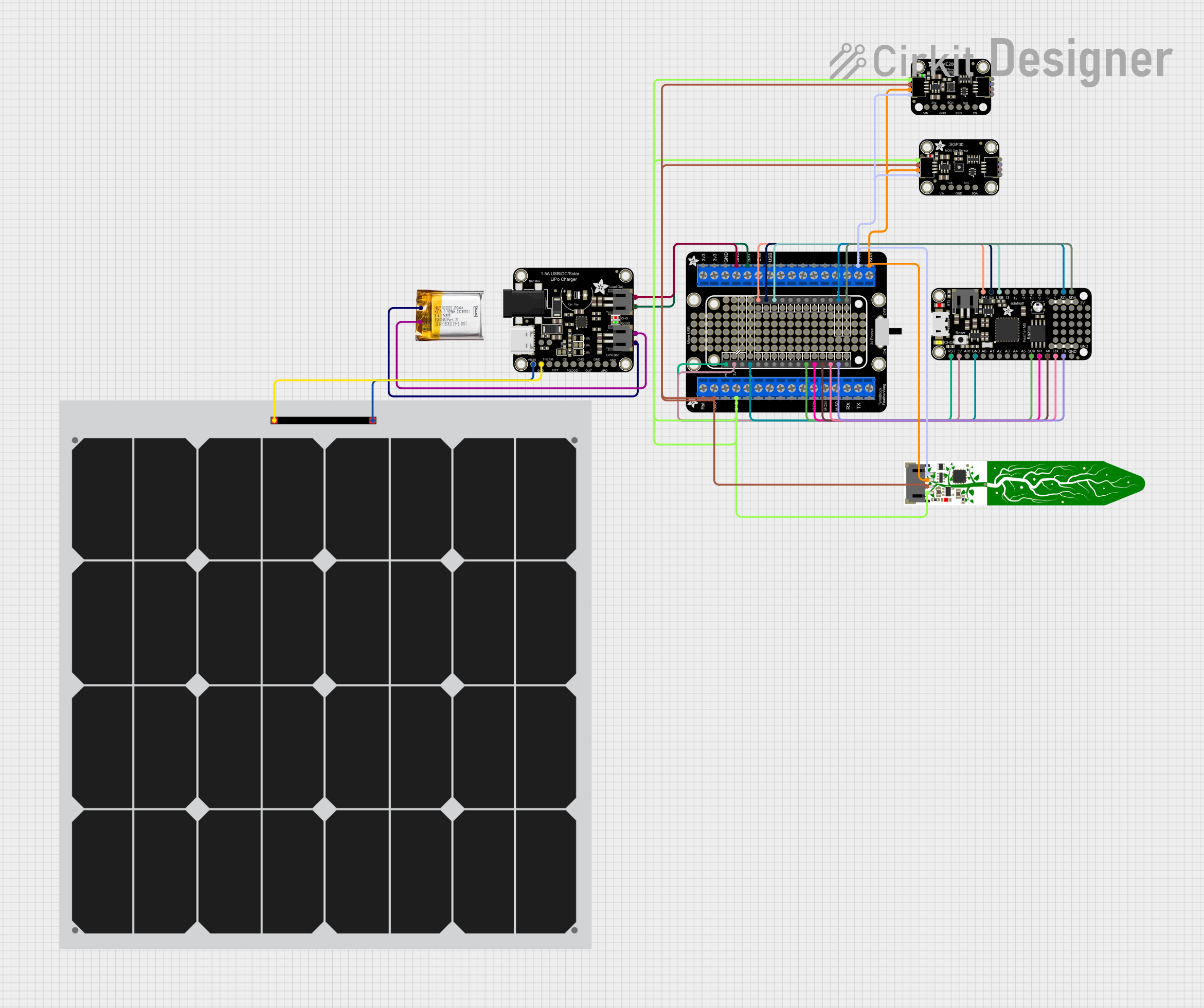
 Open Project in Cirkit Designer
Open Project in Cirkit Designer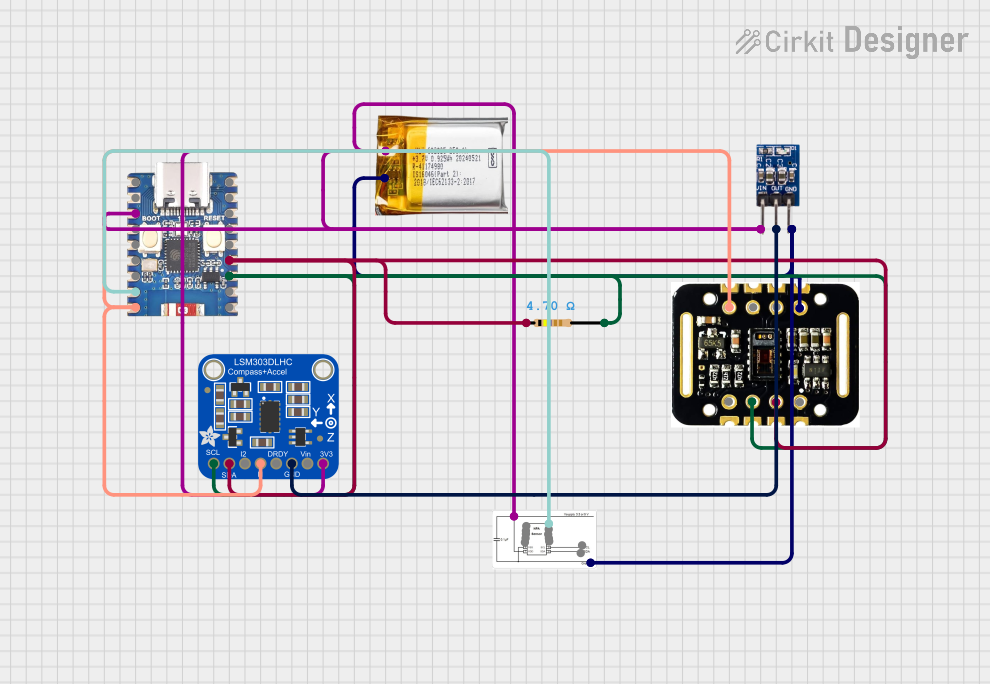
 Open Project in Cirkit Designer
Open Project in Cirkit DesignerExplore Projects Built with Adafruit MSA301

 Open Project in Cirkit Designer
Open Project in Cirkit Designer
 Open Project in Cirkit Designer
Open Project in Cirkit Designer
 Open Project in Cirkit Designer
Open Project in Cirkit Designer
 Open Project in Cirkit Designer
Open Project in Cirkit DesignerTechnical Specifications
Key Features
- Accelerometer Type: 3-axis MEMS
- Communication: I2C (up to 400 kHz)
- Voltage Supply: 1.62V to 3.6V
- Current Consumption: 165 µA (typical)
- Measurement Range: ±2g/±4g/±8g/±16g (selectable)
- Resolution: 14-bit
- Output Data Rate (ODR): 1 Hz to 500 Hz
- Interface Logic Voltage: 1.8V (minimum), VDD (maximum)
- Operating Temperature: -40°C to +85°C
Pin Configuration and Descriptions
| Pin Number | Name | Description |
|---|---|---|
| 1 | VIN | Power supply (1.62V to 3.6V) |
| 2 | GND | Ground connection |
| 3 | SCL | I2C clock line |
| 4 | SDA | I2C data line |
| 5 | INT | Interrupt output (active low) |
Usage Instructions
Integration with a Circuit
- Powering the Module: Connect the VIN pin to a 1.62V to 3.6V power supply and the GND pin to the ground.
- I2C Communication: Connect the SCL and SDA pins to the corresponding I2C clock and data lines on your microcontroller.
- Interrupts (Optional): The INT pin can be connected to a digital input on your microcontroller if interrupt-driven measurements are required.
Best Practices
- Use pull-up resistors on the I2C lines (typically 4.7kΩ to 10kΩ) if they are not provided by the microcontroller board.
- Ensure that the power supply is stable and within the specified voltage range.
- Avoid physical shocks and vibrations that could affect the sensor's accuracy during operation.
- Place the sensor away from magnetic fields and components that generate significant heat.
Example Code for Arduino UNO
#include <Wire.h>
#include <Adafruit_MSA301.h>
Adafruit_MSA301 msa;
void setup() {
Serial.begin(9600);
if (!msa.begin()) {
Serial.println("Failed to find MSA301 chip");
while (1) { delay(10); }
}
Serial.println("MSA301 Found!");
}
void loop() {
msa.read();
Serial.print("X: "); Serial.print(msa.x); Serial.print(" \tY: ");
Serial.print(msa.y); Serial.print(" \tZ: "); Serial.println(msa.z);
delay(100);
}
This example initializes the MSA301 accelerometer and continuously reads the X, Y, and Z acceleration values, printing them to the Serial Monitor.
Troubleshooting and FAQs
Common Issues
- Sensor Not Detected: Ensure that the wiring is correct and that the I2C address is not conflicting with other devices on the bus.
- Inaccurate Readings: Verify that the sensor is not subjected to strong vibrations or magnetic fields. Calibrate the sensor if necessary.
- No Data on Serial Monitor: Check the baud rate of the Serial Monitor matches the
Serial.begin(9600)in your code.
FAQs
Q: Can the MSA301 be used with a 5V microcontroller? A: Yes, but ensure that the logic level for I2C communication is shifted down to 3.3V to avoid damaging the sensor.
Q: How can I change the sensitivity range of the accelerometer?
A: The sensitivity range can be set using the setRange() function provided by the Adafruit_MSA301 library.
Q: What is the default I2C address of the MSA301? A: The default I2C address is 0x26.
For further assistance, consult the Adafruit MSA301 datasheet and the Adafruit_MSA301 library documentation.